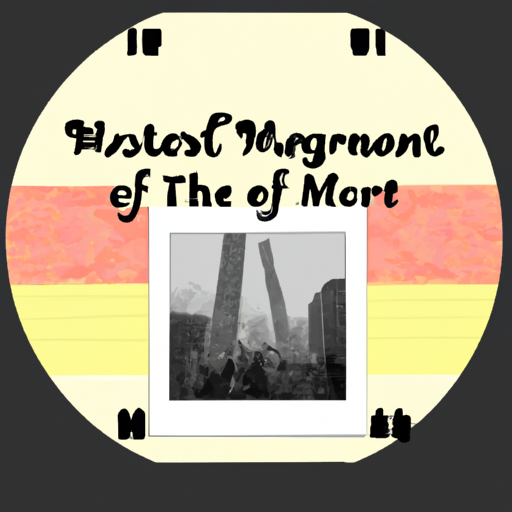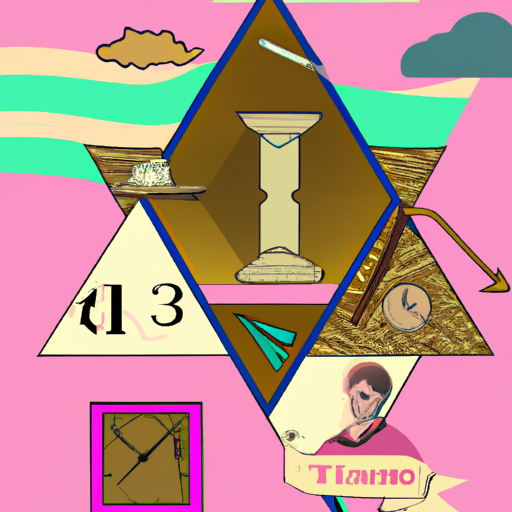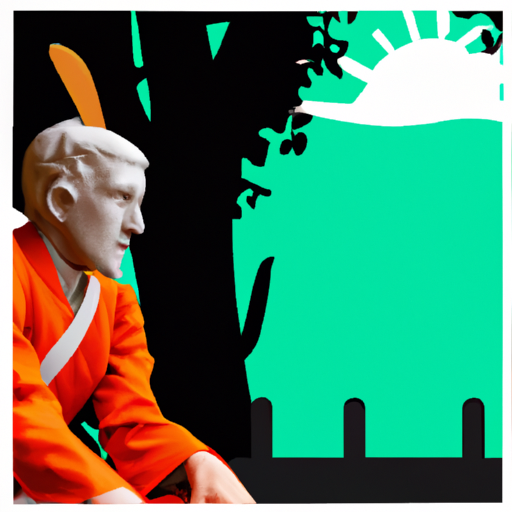A Look at the History of India’s Old Name
Uncover the secrets of India’s past and uncover its long-forgotten name! Delve into the annals of antiquity and explore a culture that has been shrouded in mystery for centuries. Unearth the mysteries that lie beneath the surface and uncover a civilization with a rich history. Reveal the hidden stories of a people whose legacy has been buried in time. Unlock the door to an ancient world and discover what lies beneath.

Awe-inspiring, mysterious and full of secrets, India’s past is a captivating one. From the earliest Indus Valley civilization to the grandeur of the Mughal Empire, this land has held an allure for centuries. With its spiritual traditions, art and architecture, there’s much to uncover about India’s history. Archaeological evidence and artifacts provide insight into a world that has been forgotten for years. Unearth tales of kings and queens, battles and empires, religions and cultures that have shaped this vibrant country. Delve into antiquity to discover a realm that lies beneath the surface. A journey through time awaits you – explore the hidden stories of India’s past!
.
Introduction

Mysteriousness and excitement surround the origin of India, with its roots stretching back thousands of years. The name India is said to have originated from the Old Persian language, where it is known as Hindush or Hindu. According to ancient legend, a great king named Bharat founded one of the earliest Indian civilizations, leading to this name being used for centuries and still in use today.
– Exploring India’s Ancient History
Unveiling the secrets of India’s past can be a captivating experience, delving into the depths of time to explore the events and tales that have shaped this incredible nation. From the Indus Valley Civilization, which flourished between 3300 BC and 1300 BC in what is now Pakistan and northwest India, to the Mughal Empire, which ruled much of South Asia from 1526-1857 AD, there have been many eras of power and development.
The Indus Valley Civilization was home to cities such as Harappa and Mohenjo-Daro, built around complex irrigation systems, and was one of the earliest civilizations in world history. Its people developed bronze tools and writing, as well as proto-dentistry! The Mauryan Empire followed after them from 322 BC to 185 BC under Emperor Ashoka; during this period art, literature, philosophy and science were all advanced.
The Gupta Empire was another powerful dynasty that reigned from 320 AD to 550 AD; it was considered by many historians a golden age for Indian culture with achievements in mathematics, astronomy and medicine. Notable works such as Kalidasa’s “Shakuntala” were written during this time. The Mughals introduced gunpowder weapons which helped them expand their empire across much of South Asia; they also constructed monuments like Taj Mahal under Emperor Shah Jahan.
Consequently today’s India is a product of its ancient history – an amalgamation of stories about powerful empires, impressive technological advancements and fascinating cultures.
– Uncovering the Origin of India’s Old Name
A mysterious and convoluted tale, the story of India is one that has evolved over time. From ancient Hindu scriptures, a name emerged: Bharatvarsha. This two-word Sanskrit phrase translates to ‘the land of Bharata’, with ‘Varsha’ meaning ‘region’. It is said to have been used by early Vedic people to refer to the area now known as India, Pakistan, Nepal, Bhutan and Bangladesh.
The Mahabharata also speaks of a king named Bharata who ruled over this region in antiquity. He was renowned for his power and strength, unifying many small kingdoms into one large empire – Bharatavarsha.
This name has been an integral part of Indian culture for thousands of years and continues to be used today. It represents unity among all Indians regardless of religious or ethnic background, as well as being closely associated with Hinduism due to its frequent appearance in sacred texts such as the Mahabharata and Ramayana.
Thus, it is evident that Bharatvarsha occupies an important place in Indian history and culture. Its origin can be traced back centuries ago where it was used to identify the region now known as India and its neighboring countries. The term symbolizes solidarity among all Indians regardless of faith or ethnicity, making it a cherished part of our collective heritage.
– Investigating the Historical Roots of India
the Jewel in the Crown” of the British Empire).
The history of India is a long and complex one, with its roots stretching back thousands of years. Its ancient civilizations and religions have left an indelible mark on the subcontinent that can still be seen today. From the arrival of Alexander the Great to the dissolution of the Mughal Empire, India has undergone numerous changes and has been influenced by many different cultures. The story of India is one that continues to fascinate and intrigue people from around the world.
– Discovering the Early History of India
Mystifying and captivating, India’s past is a story of thousands of years. Human activity in the subcontinent is thought to have begun around 75,000 years ago during the Paleolithic Era. It is believed that the Indus Valley Civilization, which prospered from 3300–1300 BCE, was one of the most advanced societies at that time. Artifacts and ruins left behind by this civilization have given us an understanding of their culture and way of life.
The Rigveda, a collection of Vedic Sanskrit hymns composed between 1500–1200 BCE, is regarded as the oldest surviving Indo-Aryan text and provides insight into their spiritual practices and beliefs. Archaeologists have also unearthed evidence of early cities such as Harappa and Mohenjo-daro in present-day Pakistan – these cities featured sophisticated urban infrastructure like drainage systems, granaries and public baths.
The Maurya Empire (322–185 BCE) was another significant period in India’s history; it was one of the greatest empires in South Asia at its peak under Chandragupta Maurya. Ashoka the Great ruled over much of India with a policy of non-violence and religious tolerance – he spread Buddhism through edicts inscribed on rocks and pillars across his kingdom.
The Gupta Empire (320–550 CE) followed the Maurya Empire, bringing about a golden age for Indian artistry, science mathematics, astronomy, literature, philosophy, engineering and architecture; it was supported by rulers like Chandragupta II Vikramaditya.
Archaeological excavations are still uncovering new information about ancient India; these artifacts give us knowledge about our ancestors’ lives thousands of years ago – knowledge that helps shape our comprehension today.
– Examining the Historical Significance of India’s Old Name
The past of India is an intricate and perplexing one, its old name, Bharatvarsha, playing a significant role in the narrative. This Sanskrit term, signifying ‘the land of the Bharata dynasty’, refers to an archaic Indian kingdom controlled by the Kshatriya warrior class. This appellation has been used for ages to describe the entire region of India, and it still holds a major place in modern Indian culture.
Bharatvarsha has been documented in numerous ancient Hindu texts, including the Mahabharata and Ramayana epics. These tales relate a great conflict between two sets of cousins – the Pandavas and Kauravas. The Pandavas were led by Yudhishthira, their eldest brother who was believed to be an incarnation of Lord Vishnu himself; while Duryodhana directed the Kauravas. Following a lengthy and fierce battle, the Pandavas were triumphant and established their realm in what is now known as India.
Apart from its spiritual value, Bharatvarsha is also politically relevant to present-day India. During British rule in India, it was utilized as an invigorating cry for Indian nationalists who wanted freedom from colonial rule. In 1947 when India finally gained independence from Britain, the nation was officially renamed “India” rather than “Bharatvarsha”. Still though, many Indians today still use “Bharatvarsha” to refer to their homeland.
The historical importance of Bharatvarsha cannot be overstated; it is deeply entrenched in both Hindu mythology and Indian nationalism alike. It serves as a reminder of India’s past while simultaneously providing hope for its future generations – consequently making it an integral part of Indian culture for years to come.
conclusion

A perplexing mystery of antiquity, India’s moniker has long been the subject of speculation and debate. From Vedic texts to modern day, the name Bharat has transcended time and space to become a symbol of independence for many. But what other titles have been bestowed upon this ancient land? Hindustan, Jambudvipa, Aryavarta – all have played their part in India’s rich cultural heritage. As we look back at India’s history, we are reminded that its name is a reflection of its people and its culture.
.
Some questions with answers
Q1. What is India old name?
A1. India’s old name was Bharatvarsh, which is derived from the ancient Indian King Bharata.
Q2. What is the origin of India’s old name?
A2. The origin of India’s old name, Bharatvarsh, comes from an ancient Indian King named Bharata.
Q3. How long has India been known by its current name?
A3. India has been known by its current name since 1947 when it gained independence from British colonial rule.
Q4. What other names has India been known by in history?
A4. In ancient times, India was also known as Aryavarta and Jambudvipa or the Land of the Seven Rivers.
Q5. How did the name “India” come to be used for the country?
A5. The term “India” was first used by Greeks and Romans to refer to the region beyond the Indus River and eventually became a common term for all of South Asia in British colonial times.



